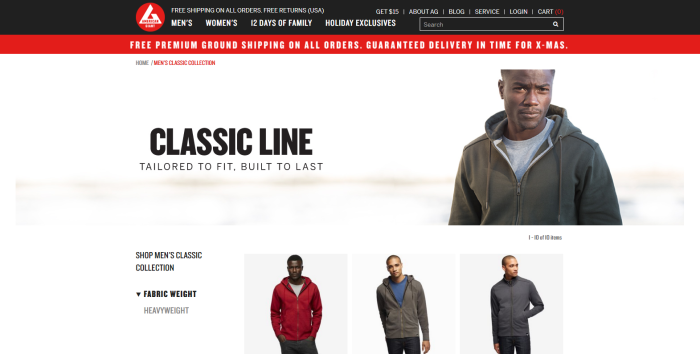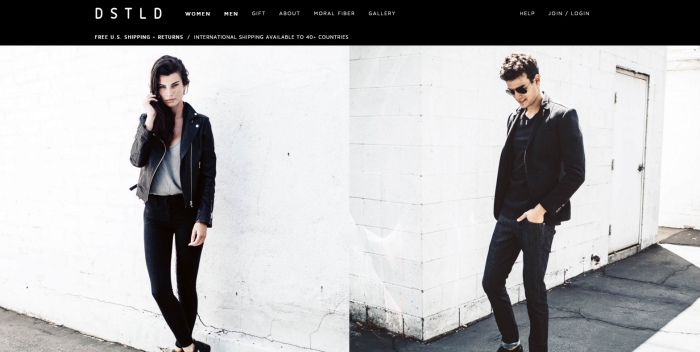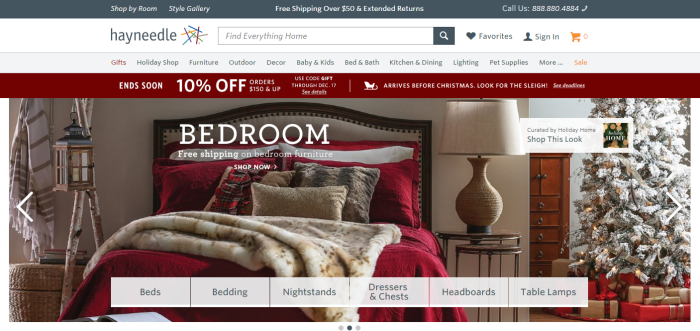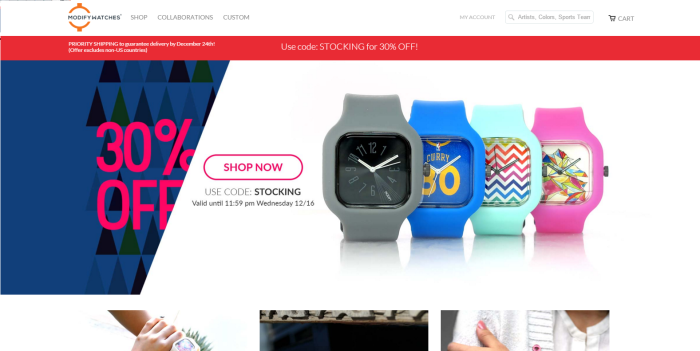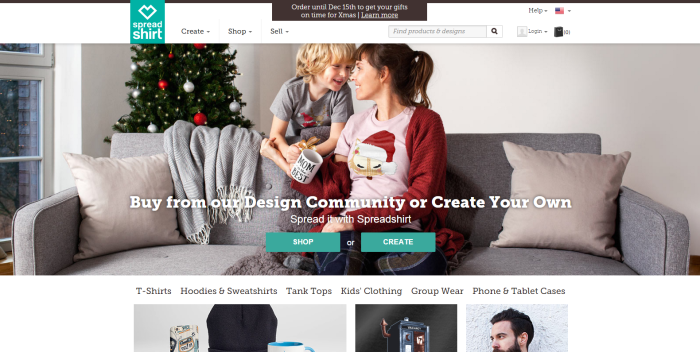How 7 Ecommerce Brands Plan to Use Their 2016 Marketing Dollars
As the year comes to an end, shoppers are spoiling themselves with holiday sales and Ecommerce companies are hustling, behind the scenes, to package and ship customers’ orders. And although the holiday frenzy isn’t yet over, many brands are looking ahead to 2016, planning their next steps towards world domination. To get a sense of what some Ecommerce companies have in-store for the New Year, we spoke with a few industry insiders to learn about their 2016 marketing strategies.
American Giant: Promoting earned media
Since its 2012 launch, apparel brand American Giant (AG) has managed to triple sales every year. Some may say the Ecommerce brand got lucky, but the team behind AG attribute their success to a quality product and word-of-mouth from happy customers. Across the web, the company has earned rave reviews from the media too. In fact, Slate’s Farhad Manjoo calls AG’s signature hoodie, “the Greatest Hoodie Ever Made.” And in 2013, orders had piled up so much that AG’s staple hoodie had a four-month waitlist before new customers could get their hands on it.
But, as many marketers know, earned media and positive press can be unpredictable; traffic can spike one day and sales can multiply overnight but suddenly the excitement and hype tapers off. To keep up the momentum, American Giant employs an unusual approach to public relations. Over email, founder and CEO Bayard Winthrop, shares, “We’ve seen some great press, particularly around the product, and we maximize that reach by continuing to push those stories out to online audiences via [advertising and paid content distribution] tools like Outbrain. Rather than direct people to our website, we instead direct them to press about the brand.” In its history, the company hasn’t invested much money or time into traditional marketing, says Winthrop. Despite that, going into 2016, it will continue to pump advertising dollars into paid distribution of earned press so that potential customers can learn about the brand from credible sources around the web.
DSTLD: Reinforcing the brand through content
Currently, denim company DSTLD processes more than 5,000 transactions on its website each month. But as a business with less than two years of history, one of its biggest priorities in 2016 is in reinforcing its brand through content. The expectation, then, is that strong content will help drive sales too.
Corey Epstein, co-founder and creative director, reveals, “We’re planning to amp up our blog with more content around the idea of ‘distilling’ your life to reinforce our brand’s ethos, interview likeminded creative influencers of all ages and various types of professions (could be a photographer, architect, musician, etc.), that kind of thing.” Of course, DSTLD isn’t alone. Data from Curata suggests, “76% of marketers are increasing investment in content marketing.” In 2016, we’ll see thousands of new Ecommerce brands producing good — and not-so-good — content that educates, engages and entertains consumers everywhere.
Grunt Style: Partying with customers
In many ways, apparel company Grunt Style embodies the true American spirit. American flags adorn some its garments while other items feature sassy one-liners. Yet, where the business truly shines is in its commitment to American heroes. Currently, Grunt Style employs 100 veterans and patriots and from its 50,000 square foot company-owned facility, the Ecommerce brand produces and ships more than 70,000 products each month, says Daniel Alarik, CEO and owner.
This year, the business has benefitted from a strong, organic social media presence and positive word-of-mouth (its Facebook page reached a milestone of one million fans without ever having to pay for likes). But for 2016, Alarik and his team anticipate hosting a series of events to bring customers and fans together using the promise of fun and — in some cases — alcohol. For many Ecommerce companies, events are a perfect way to accomplish three things:
- Demonstrate the human side of your brand
- Earn press
- Showcase new products
While most Ecommerce shops focus exclusively on ways to connect with customers online, an increasing number of digital-first brands are merging the online and offline worlds to engage shoppers wherever they are.
Hayneedle: Doubling down on print (again)
For Hayneedle, a home goods e-tailer which offers more than 3,000 brands and millions of products, it may seem counterintuitive when the company admits that print is one of its most profitable marketing channels.
Jeremy Podliska, vice president of marketing, explains, “As a pure play Ecommerce player, print hasn’t been in our DNA, but it’s proved to be a great way to engage with and retain our customers. In addition, by targeting the right demographics, direct mail is an effective way to acquire new customers. It’s cost effective, too. We can acquire customers through print as profitably as we can through paid search and other direct online channels.” Like ProFlowers, Vitacost and Lands’ End, Hayneedle issues catalogs that put customers in a purchase-ready state long before they visit Hayneedle.com. In 2014, the home goods store realized that its investment in print had paid off, so it decided to double down on print marketing for 2015. This year, print marketing continued to generate positive ROI; Podliska expects to double the firm’s investment in print marketing yet again.
Modify Watches: Retargeting shoppers
When the year ends, custom watch shop Modify Watches expects to tally about $600,000 in Ecommerce sales for 2015. To grow that figure further, founder and CEO Aaron Schwartz is going all-in on Facebook and Instagram advertising in 2016 to deliver audiences an incredible visual experience which aims to build deeper customer connections and, ultimately, convert sales. In recent marketing campaigns, Schwartz has seen a ton of success with Facebook retargeting; overall, it generates a 5 to 1 ROI on spend.
A 2014 study by AdRoll found that marketers were increasingly spending a majority of their digital advertising budgets on retargeting. While new data isn’t available yet, many brands are surely including retargeting as a vital part of their integrated marketing campaigns in the New Year. That way, they may recapture customers who have expressed interest in their brand in the past to convert sales when those shoppers are in a more purchase-ready mindset.
Spreadshirt: Capturing TV audiences
Last year, Ecommerce giant Spreadshirt.com earned $96 million in sales. And in 2016, the company aims to ship nearly 3 million orders to customers in over 150 countries, says Spreadshirt’s head of direct to consumer marketing in North America, Adam Lasky. To do that though, the business plans to increase its investment in TV advertisements in the European Union, where Spreadshirt’s headquarters is based. Although TV ads are expensive, they are a massive driver of growth for bigger brands like Spreadshirt. That is because, at scale, many other marketing channels simply do not offer the same levels of consumer engagement and reach.
According to a recent study by Turner Broadcasting and Horizon Media, TV ads outperform digital display advertising, paid search marketing, and print and radio advertising. While the others tout advanced targeting options, TV continues to generate positive ROI for brands who fulfill millions of customer orders each year.
Threadless: Turning artists into marketing machines
Over the past 15 years, thousands of artists have participated in the Threadless design challenge. Throughout that time more than 350,000 t-shirt designs have been submitted, though only 7,500 unique styles have been printed and sold. That means that only 2% of submitted designs have been put to production. Sadly, the remaining 98% never quite make it in front of potential customers who might actually fall in love with the design. What is worse is that rejected designs may discourage contributing artists from future submissions.
In an effort to better empower artists to grow their own personal brands and earn money, the team behind Threadless launched Artist Shops, a platform enabling artists to create and market their own designs while Threadless handles production, logistics and customer service. And so far, it has been a success. According to Kyle Geib, marketing and social media specialist at Threadless, more than 30,000 artists have signed up and reserved their personal web stores. The expectation, moving forward, is that each empowered artist / store owner would market his or her designs and, consequently, drive sales on Threadless.com. Rather than making a traditional investment in marketing, Geib and his team have built a platform that artists can use to showcase and sell their work. In the years to come, I suspect this will turn into a major source of revenue for the crowdsourced t-shirt company as it allows artists to share previously overlooked designs and perhaps prove Threadless’ selection committee wrong when those formerly rejected designs sell like hot cakes.
How do you expect you’ll spend your marketing budget in 2016? Let us know in the comments below!
